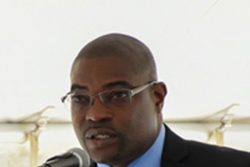Thank you for publishing Mr Bakr’s letter in the March 26, SN edition (‘There is no scientific basis to Kissoon’s concept of “polysexual”’. Many of your readers might have similar questions about the linkage between chromosomes, anatomy, gender identity, emotional and sexual attractions.
The research into gender and sexuality started in the 20th century and is ongoing. The information at http://www.plannedparenthood.org explains some of the current thinking on gender and sex.
The word ‘sex’ is now used to refer to our biology – our sexual anatomy and our chromosomes and previously it was thought there were only two – male and female. However, we are starting to recognise that some babies (estimated at about 1 in 2000 in the US) are born with indeterminate sexual genitalia – and intersex is the term now used as a third option. While science has recognised intersex, the law does not recognise intersex and the decision of doctors to turn people into male or female has often caused complications. In Guyana, there have been intersex babies but the health sector has been silent on how it treats with those babies. While most of us might have the XX or XY chromosomes, there are some of us who do not (Turner Syndrome and Klienfelter’s Syndrome ) and the debate rages as to whether people who have these differences should be prodded or medicated into one of what we view as ‘male’ or ‘female.’
The word ‘gender’ refers to society’s expectations about how we should think and act based on our sexual anatomy. The expectations relate to what duties we are supposed to fulfil, whether we get access to education and other resources, how we condition ourselves in terms of violent behaviour, and who we are supposed to be emotionally and sexually attracted to. These expectations are based on culture, history, time, religion, geography, class and other factors, and the roles continue to evolve. The law treats men and women differently and the law also evolves.
Our ‘gender identity’ is how we feel about and express our gender and gender roles. This could be in the way we dress, walk, talk, behave at home and in public.
The people who find that their gender identity does not match their sex may identify as ‘transgender’ or use other words such as ‘gay’ if they are men transitioning to women. Ancient cultures and texts have identified various forms of transgendered persons. The Vedic texts and other Indian texts have identified many different forms of ‘transgender,’ and there are sometimes no easy English translations. The Supreme Court in Pakistan last year ordered that a third gender ‘hijra’ be recognised officially when persons registered for their national identity card.
Our sexual orientation refers to whether we feel sexually attracted to persons of the same gender or of other genders. Our sexual orientation can be complex because we may have different degrees of desire, and some persons talk about ‘affectional or romantic orientation’ to refer to who we feel intense emotions for and with whom we would want to build romantic relationships. Alfred Kinsey proposed a scale of sexual oriention of 1 to 7, with 1 being exclusively heterosexual and 7 exclusively homosexual, and X being asexual. Some viewed this scale as too simplistic and Fritz Klein proposed a multi-dimensional scale which proposes that people over time can move between heterosexual and homosexual attractions. Persons who are curious may want to do their own test at http://www.kleingridonline.com/.
The belief that persons ‘choose’ their sexual orientation and that they can change from being homosexual to otherwise is misguided. The question of choice comes in what we do with our desires – some people of all sexual orientations might opt for celibacy, or for non-sexual romantic relationships, while other persons adhere to what seems to be the ‘normal’ culture of heterosexual promiscuity without any romance or respect.
The discussion on these issues should continue, so that people could reveal their understanding and perceptions.
Yours faithfully,
Vidyaratha Kissoon









